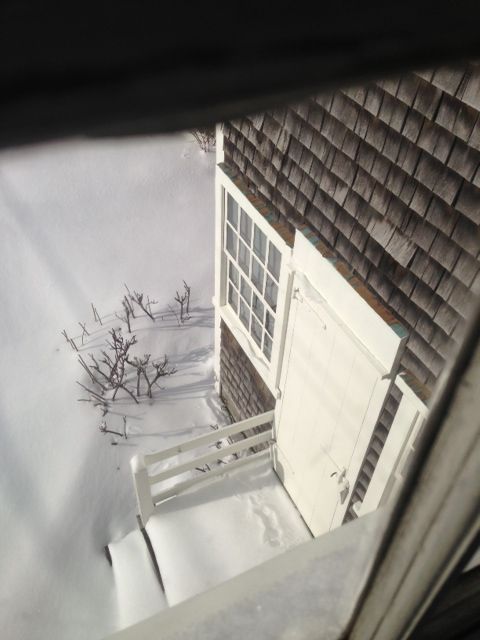USS Nantucket Cmdr. Kari Yakubisin joins the MMA for Daffodil Weekend Programs and Events
NANTUCKET, MA—The Nantucket Maria Mitchell Association (MMA) announces a special visit and Daffodil Weekend programming in collaboration with USS Nantucket Cmdr. Kari Yakubisin and her Pre-commissioning unit (PCU Nantucket).
On Friday, April 28 from 12-1PM, the MMA will host Cmdr. Yakubisin for a special edition “Nature Story Hour” at the Hinchman House Natural Science Museum, 7 Milk Street. Designed for the young explorer, during this session Cmdr. Yakubisin will read a themed book, assist in introducing you to one of the MMA’s educational animal ambassadors, and co-facilitate an aligned activity. Pre-registration is required with details on the MMA’s website.
On Saturday, April 29, Cmdr. Yakubisin will be riding in the Nantucket Daffodil Festival Car Parade in a 1967 Jeep Jeepster owned by Andrea and Neil Planzer and sponsored by the MMA. The Jeep’s theme is saluting female leaders and honoring the connections between Maria Mitchell and the US Coast Survey, US Nautical Almanac, and US Navy. Mitchell was one of the first women, if not the first, to work for the US federal government.
“It’s an honor to host the Commander and to highlight the role Maria Mitchell played in the early years of the US Coast Survey and its ties to navigation, the US Navy, and the US Naval Observatory,” shared Joanna Roche, MMA Executive Director. “In its early years, Maria Mitchell worked alongside her father, William, as he worked for the Coast Survey taking astronomical and meteorological data that was then used to create tide maps – a critical tool needed for the US Navy and all mariners. She would later work for the Coast Survey on her own as well. In 1849, Mitchell was appointed as the first female computer for the US Nautical Almanac Office, which was attached to the US Navy. Her role involved performing complex mathematical calculations that were used to determine the ephemeris of Venus. This helped ships use the data collected for celestial navigation to determine the position of their ship while at sea.”
Cmdr. Yakubisin and PCU Nantucket will also be visiting Cyrus Peirce Middle School and Nantucket High School in an effort to reach local students and island residents, while sharing the mission of the USS Nantucket (LCS 27) to the broader community.
Cmdr. Yakubisin was commissioned in May 2005 via NROTC at Vanderbilt University where she earned her Bachelor’s degree in Molecular and Cellular Biology. She completed Nuclear Power School and Prototype in Charleston, South Carolina in April of 2008. She earned her Master’s Degree in Engineering Management via Old Dominion University in 2013.
Cmdr. Yakubisin has received numerous accolades and awards, including the Meritorious Service Medal, Navy and Marine Corps Commendation Medal (three awards), and the Navy and Marine Corps Achievement Medal (three awards). She joined USS Milwaukee as Executive Officer in June of 2020 and became Commander of the USS Nantucket.
A Littoral Combat Ships (LCS) is a highly maneuverable, lethal and adaptable ship designed to support focused surface warfare, mine countermeasures and anti-submarine warfare. LCS integrates new technology and capability to affordably support current and future mission capability from deep water to the littorals.
Follow USS Nantucket at: USS Nantucket LCS 27 | Facebook
The Maria Mitchell Association was founded in 1902 to preserve the legacy of Nantucket native astronomer, naturalist, librarian, and educator, Maria Mitchell. After she discovered a comet in 1847, Mitchell’s international fame led to many achievements and awards, including an appointment as the first female professor of astronomy at Vassar College. Maria Mitchell believed in “learning by doing” and today that philosophy is reflected in the MMA’s mission statement, programs, research projects, and other activities. The Maria Mitchell Association operates two observatories, a natural science museum, an aquarium, a research center, and preserves the historic birthplace of Maria Mitchell. A wide variety of science and history-related programming is offered throughout the year for people of all ages.
###
For Immediate Release
April 26, 2023
Contact: Logan Gomes, Director of Advancement
Recent Posts




